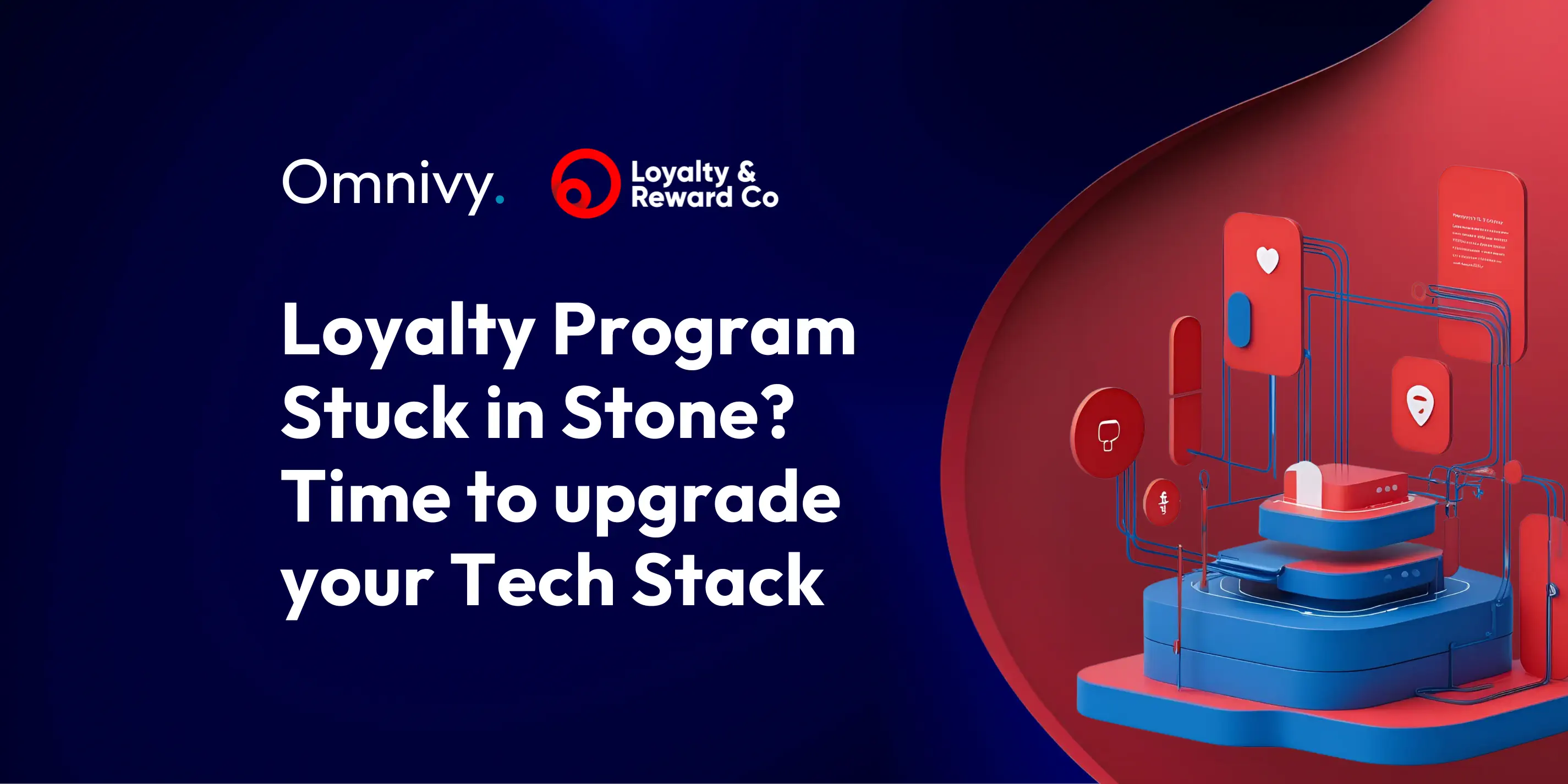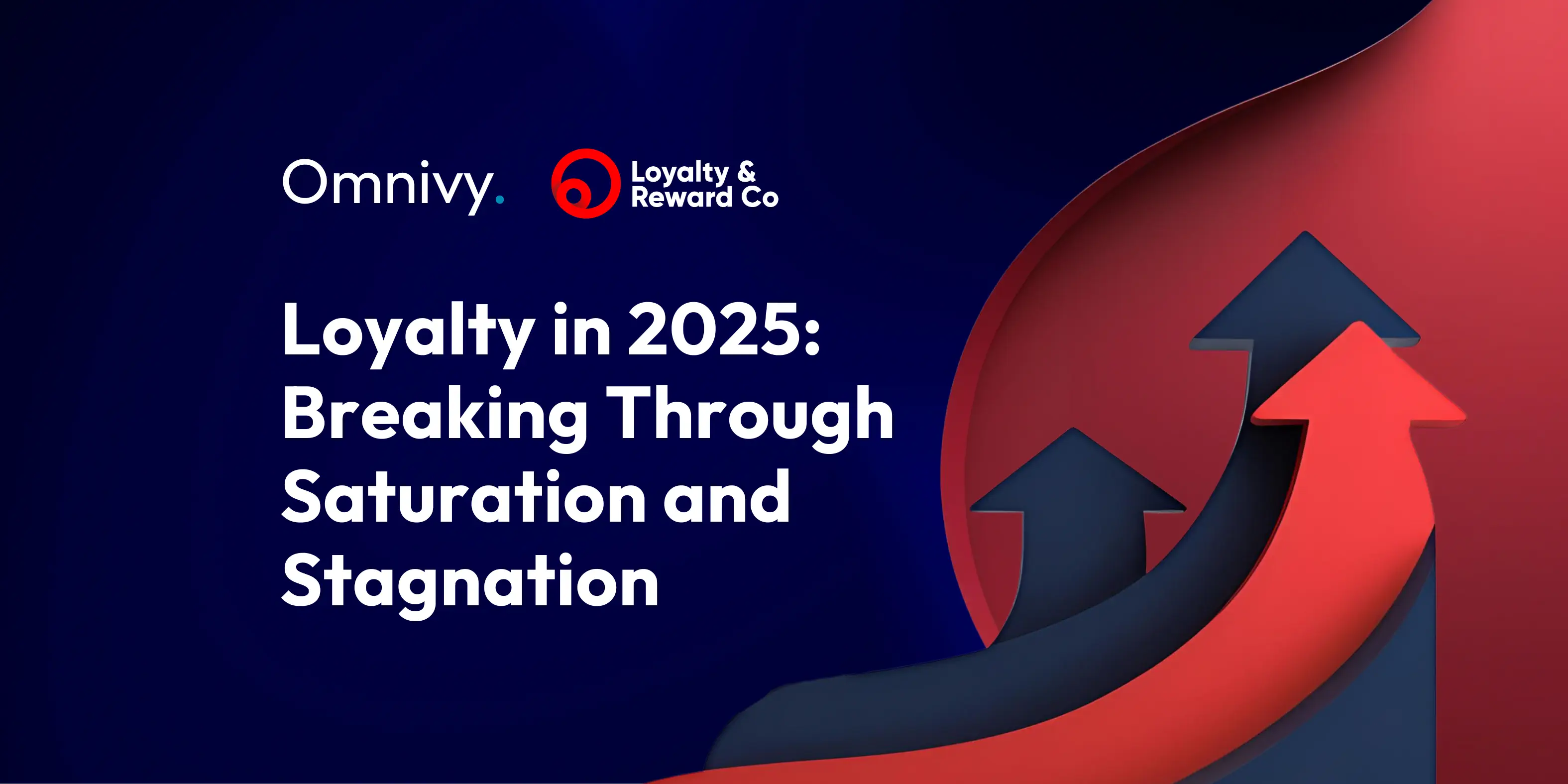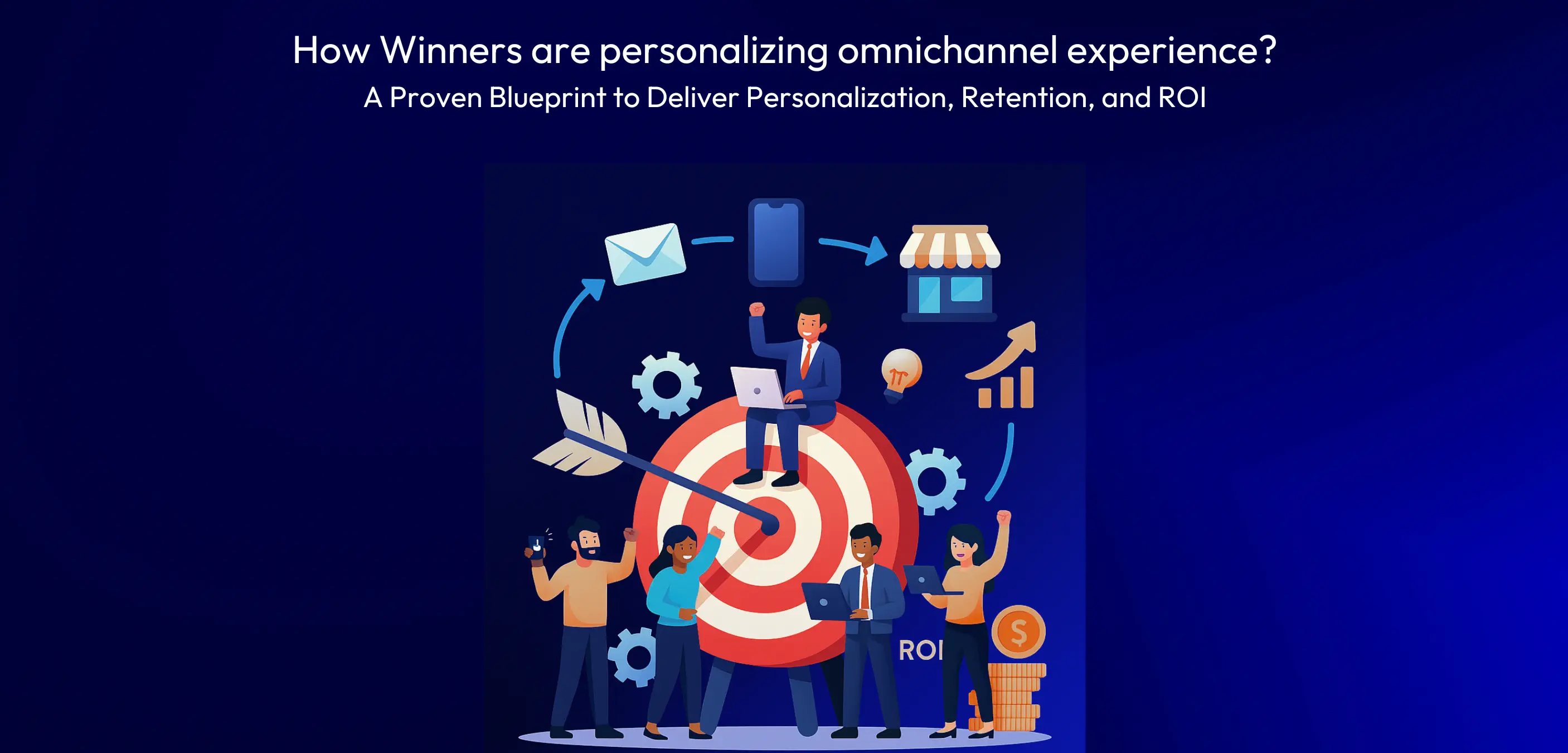Composable architecture, much like AI, is a hot topic in marketing technology. While everyone is talking about it, few are actually implementing it—and even fewer probably believe it's more than just another buzzword that will be replaced by the next trendy term in a year or two.
This post kicks off a series on composable architecture accelerators, with a particular focus on loyalty and promotion software.
We’ve been quite vocal about our belief that composable architecture is the future of loyalty marketing tech stacks. In fact, we even published a white paper detailing why we think the future of loyalty tech stacks in fuel retail belongs to composable systems. So yes, we’re admittedly biased.
Our bias comes from years of firsthand experience, watching companies of various sizes struggle with loyalty and promo tech implementations, often trying to fit square pegs into round holes. In our view, composable architecture offers a better chance of long-term success for loyalty tech implementations. That said, it comes with its own set of challenges, and accelerators are precisely what make the benefits of composable far outweigh the drawbacks.
In this post, we'll cover:
- A recap of composable architecture principles and benefits
- How it applies in the context of loyalty technology
- Composable architecture flaws (aka challenges)
- Accelerators - how they address the challenges of composable architecture
But before we dive in, here's an AI visualization of "composable architecture accelerator":

I’m afraid the reality is far less Cyberpunk or Star Wars-esque. But then, is it really AI's job to depict things as realistic as they truly are?
Composable Architecture
Composable architecture means that instead of having a single all-in-one system covering a wide range of functions, you have multiple, smaller, narrowly-focused applications working together to deliver functionality for end users.
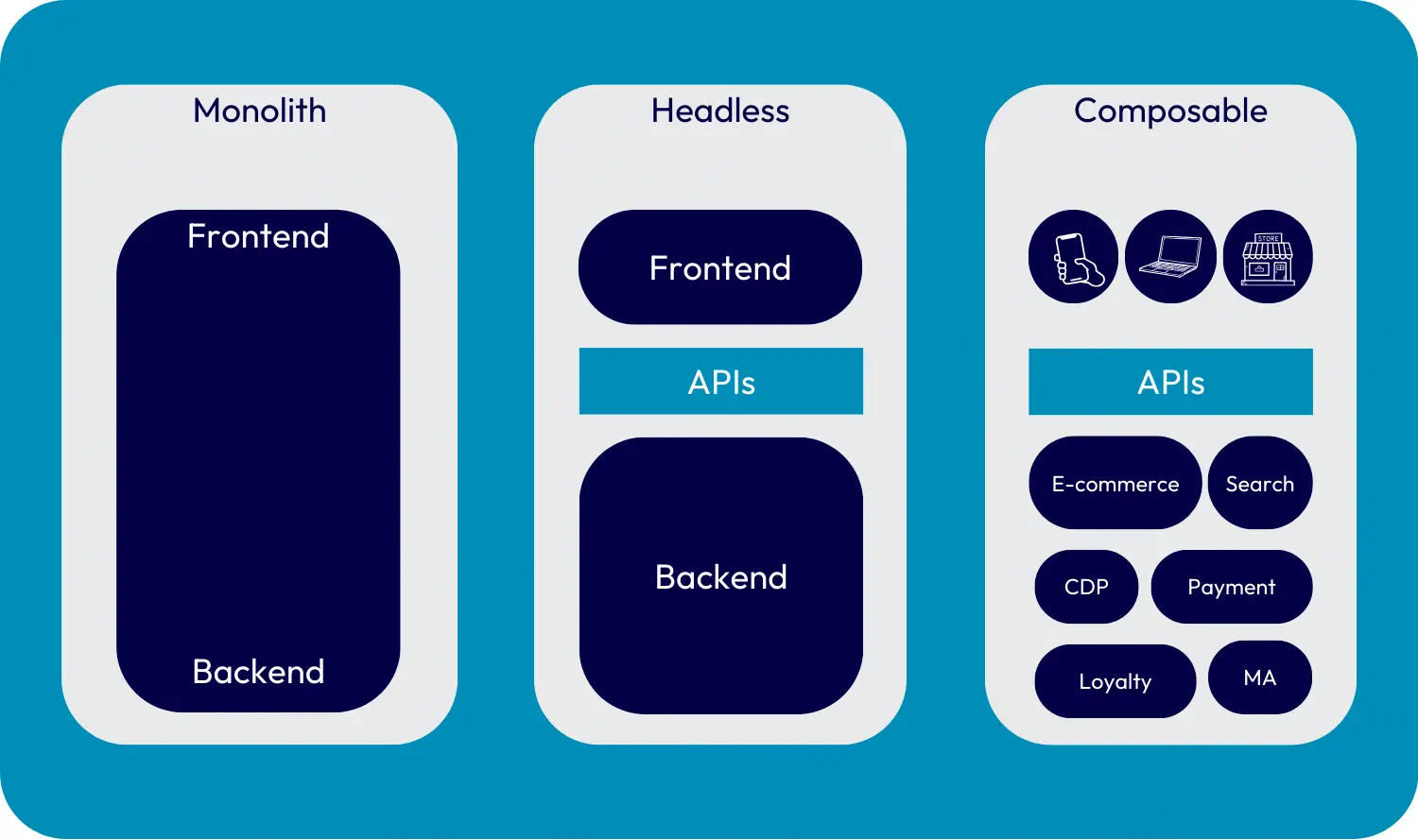
In the e-commerce world, this would mean foregoing one system to manage product catalogs, checkouts, email notifications, payments, and so on. Instead, you'd have separate systems for each function.
Now, there are two possible reactions to a vision like this:
Great! Now I can pick and choose best-of-breed systems in each of these categories and compose a world-class e-commerce experience.
or
Wonderful. So instead of having one system to manage and troubleshoot, I'm going to have five.
Both reactions are completely valid. In fact, they capture the biggest benefits and drawbacks of composable architectures.
Composable allows to create great ecosystems out of smaller best-of-breed components. At the same time, it comes with the cost of managing multiple systems from multiple suppliers, each with some great features but also their own little quirks.
From an executive perspective, composable means you're not invited to just one vendor user group, but to five. Sounds fun! But at the same time, if something goes terribly wrong—say your e-commerce is down just before Black Friday—you'll have all five friendly vendors pointing fingers at each other, trying to push the blame as far away from themselves as possible.
There is one overarching advantage of composable tech stacks, though: they allow for quick replacement of individual components. Change cycles can get dramatically shorter if a technology stack is designed according to composable principles. Whenever a new leader emerges in some field or you'd like to try out a new approach to a certain technology, in the composable world, this doesn't mean you need both business and technical teams to sit down and re-imagine your entire marketing technology ecosystem. All it takes is swapping out an individual component that should be (if done right) loosely coupled with the rest of the stack.
Loyalty tech role in the composable MarTech ecosystem
Loyalty Management Systems are a perfect example of a specialized component in a modern marketing technology stack.
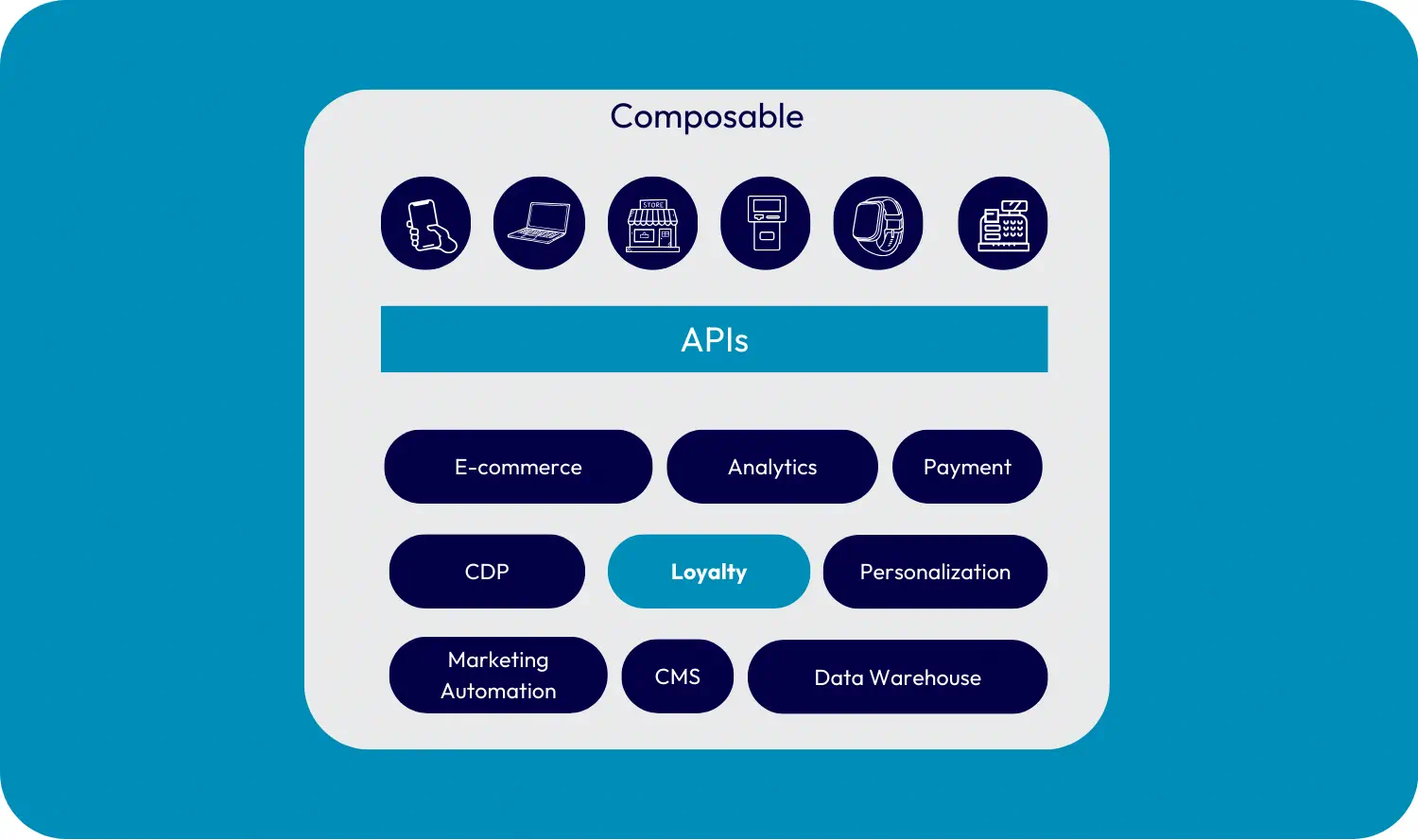
These systems are highly specialized, needing to manage complex loyalty business logic—such as multiple points wallets, coupon generation, and gamified incentives management. At the same time, they must process transactional and activity data with minimal latency.
This requires a completely different approach than, say, a personalization system that mines huge batches of historical data to generate insights for future campaigns. Attempting to fit both functionalities into a single system typically results in average performance for both.
This is why we believe that the best loyalty systems indeed follow composable principles. They complement other systems and allow for the introduction and management of complex promotions and incentives. Simultaneously, they must easily integrate with other systems—for example, data warehouses where all the stats and calculations can be generated independently of operational transaction processing.
To sum things up: Loyalty and promotion systems fit right into a broader composable strategy for marketing technology. They exemplify the benefits of specialized, interconnected components that can excel in their specific functions.
Challenges
It's not all sunshine and rainbows with composable technology. Here, I'll focus on the negative aspects of composable software when choosing loyalty tech. Here's a totally subjective list of the top three:
- Complexity
- Costs
- Integration
Complexity
This one was already mentioned. Multiple systems mean multiple problems, multiple vendors to manage, and multiple standards to support. Every new system in the tech stack increases the complexity of managing the technology stack exponentially. And let's be honest: only very few companies have properly sized teams to manage all the tech needed to run their marketing operations effectively. Most are understaffed, gradually taking over tasks from other (also understaffed) departments.
Most customer-facing processes in a composable environment touch on a couple or sometimes dozens of systems. The example of an e-commerce store going down before Black Friday is not a hypothetical story—these things do happen. And when the store is down, nobody will care whether it's the commerce engine, payment gateway, checkout, or any other neat service.
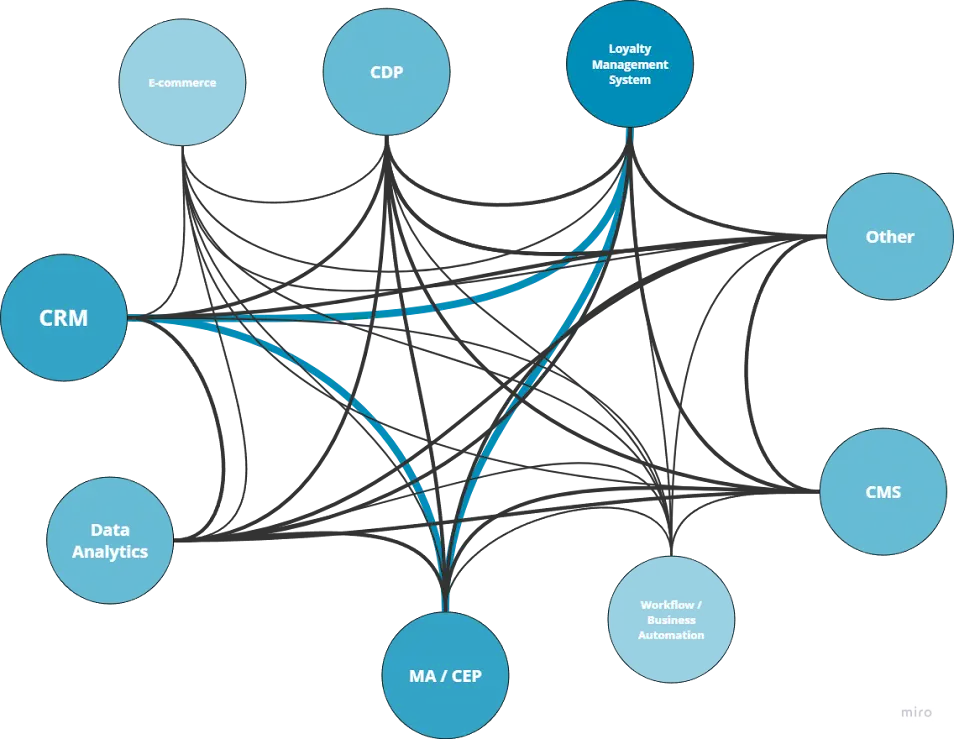
This generally leads to the conclusion that composable comes with a higher entry bar, both from business and technical perspectives. In fact, this approach forces business and tech teams to work much closer together than in any other setup. While this is a good thing in the grand scheme, it's often very hard to achieve, especially if the organization used to follow a traditional responsibility split between tech and business teams.
Costs
Advocates of composable technology will say that composability allows for the smartest allocation of marketing technology budgets. This is because, in theory, you can spend more money on systems that are mission-critical for your business, realize your long-term strategy, and pick more affordable options for those that serve a supporting function.
Say you run an online pharmacy with a huge variety of products and rapidly changing stocks. Your Product Information Management (PIM) system will probably require more attention than an Engagement Platform focused on push notifications—especially if you don’t have a mobile app.
Additionally, composable systems generally follow all cloud-native principles. One of them is scalability. In principle, you should only be paying for usage and not for idle infrastructure like in on-premise models.
In reality, however, this works really well once you already have scale and decent usage rates and fluctuations. We've seen it a couple of times: for businesses planning to launch their first loyalty program. The fact that they need to get a Loyalty Platform, Marketing Automation, and a Data Warehouse just to have good functional coverage of basic loyalty processes can end up being way more expensive than a single all-in-one platform. A couple years later, when the program grows, it may make sense to migrate to a more composable solution. But these initial costs are sometimes a dealbreaker.
Integration
Loyalty engines have this trait—they only start to bring value once they are integrated with other systems. They need some source of transactions and activities to capture (e.g., an e-commerce engine or a POS) and then a place to apply loyalty effects (points, discounts, coupons, achievement boards, and so on). They literally serve no purpose unless they’re integrated with other systems.
This need for integration is both a blessing and a curse in the composable world. On one hand, composable architecture principles should make integrations easier, as systems are designed to be modular and interconnected. However, reality often falls short of this ideal.
Each integration point introduces potential for errors, latency, and data inconsistencies. When dealing with real-time loyalty applications, even small delays can significantly impact user experience.
Another challenge lies in data synchronization across systems. Loyalty programs often require up-to-date information from various sources—transaction history, customer profiles, product catalogs, etc. Ensuring that all these data points are accurately and timely synced across multiple systems can be a significant technical hurdle.
In conclusion, while integration is a fundamental aspect of composable architecture and can lead to more flexible and powerful systems, it also introduces its own set of challenges.
Accelerators
Accelerators and pre-composed solutions emerge as unsung heroes, addressing many of the challenges we've discussed. Yet, their definitions are often unclear. Take this anonymous example:
“[...] pre-integrated composable accelerator, designed to streamline omnichannel e-commerce, optimize site performance, and deliver a customized user experience without the complexity of legacy systems.”
I mean, this looks like a bunch of words that make very little sense in one sentence.
I’d simply say that a composable accelerator is anything that maintains the composable advantages while reducing one or more of the drawbacks we’ve just discussed. They could be as simple as written best practices in the form of documentation or industry-specific guidelines. Or they could come in the form of an app or a platform that directly delivers functionality to end users by linking composable backend systems. Or anything in between.
An accelerator could also take the form of ready-to-use frontend components. This is one of the features our very own loyalty integration accelerator provides. It connects Shopify with best-of-breed loyalty systems and offers ready-to-use frontend components that allow branding to be applied seamlessly across Shopify accounts and checkout screens.

The most important aspect of an accelerator is how it addresses the challenges that come with composable architecture and its impact on the final solution's delivery time, completeness, maintainability, and performance.
Using an accelerator means less time spent figuring out how to make everything work together and more time focusing on business needs. The reduction in complexity translates directly to cost savings. While the initial investment in a fully custom composable stack can be high, accelerators and pre-composed solutions offer a more cost-effective entry point. They reduce implementation time, lower the risk of integration failures, and enable faster time-to-market for new features.
Perhaps the most significant impact of accelerators is in the realm of integration. Pre-built connectors for common systems, standardized APIs, and optimized data flows drastically reduce the time and expertise required for integrations. This lowers the barrier to entry for composable architectures, making them accessible to a broader range of businesses.
In the loyalty space, these solutions offer immediate benefits such as rapid deployment, scalability, and industry-specific features. Businesses can launch basic loyalty programs in weeks rather than months, start small and easily add features as their program grows, and leverage pre-built features tailored to their sector.
Conclusions
As we've explored, composable architecture in loyalty technology is a double-edged sword. It offers clear benefits: flexibility, best-of-breed solutions, and the ability to pivot quickly as business needs change. But it also comes with its fair share of challenges.
Complexity rears its head in the form of multiple systems, vendors, and standards to juggle. It's a juggling act that many understaffed teams struggle to maintain, often leading to a closer (but sometimes fraught) relationship between business and tech teams.
Costs can be a mixed bag. While composable systems promise optimized spending and scalability, the initial investment can be steep, especially for businesses just dipping their toes into loyalty programs. The dream of paying only for what you use can take time to materialize.
Integration, the linchpin of composable systems, is both a blessing and a curse. It's the secret sauce that makes everything work together seamlessly - when it works. But it's also a potential minefield of errors, latency issues, and troubleshooting nightmares.
So, is composable architecture the future of loyalty tech stacks? In our view, yes - but it's a future that requires careful navigation. And accelerators serve this exact purpose.
In the next posts, we will explore the idea of using composable accelerators for promotion and loyalty software in much greater depth, so make sure to come back for more!


